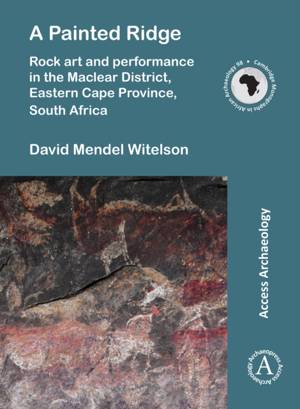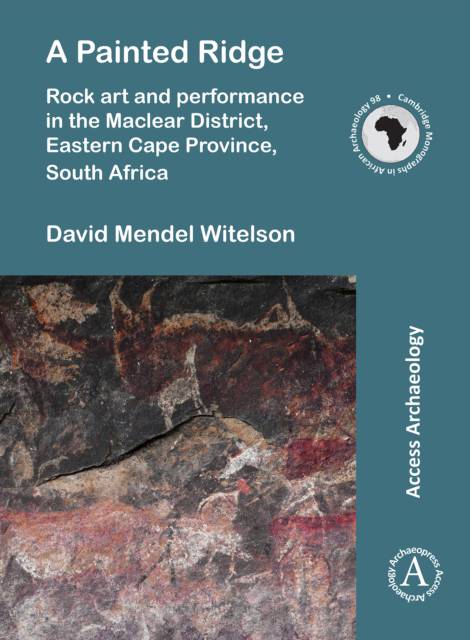
- Afhalen na 1 uur in een winkel met voorraad
- Gratis thuislevering in België vanaf € 30
- Ruim aanbod met 7 miljoen producten
- Afhalen na 1 uur in een winkel met voorraad
- Gratis thuislevering in België vanaf € 30
- Ruim aanbod met 7 miljoen producten
Zoeken
A Painted Ridge
Rock Art and Performance in the Maclear District, Eastern Cape Province, South Africa
David Mendel Witelson
€ 47,45
+ 94 punten
Omschrijving
A Painted Ridge is a book about the San (Bushmen) practice of rock painting. In it, David Witelson explores a suite of spatially close San rock painting sites in the Maclear District of South Africa's Eastern Cape Province. As a suite, the sites are remarkable because, despite their proximity to each other, they share patterns of similarity and simultaneous difference. They are a microcosm that reflects, in a broad sense, a trend found at other painted sites in South Africa. Rather than attempting to explain these patterns chiefly in terms of chronological breaks or cultural discontinuities, this book seeks to understand patterns of similarity and difference primarily in terms of the performative nature of San image-making. In doing so, the bygone and almost unrecorded practice of San rock art is considered relative to ethnographically well-documented and observed forms of San expressive culture. The approach in the book draws on concepts and terminology from the discipline of performance studies to characterise the San practice of image-making as well as to coordinate otherwise disparate ideas about that practice. It is a study that aims to explicate the nuances of what David Lewis-Williams called the 'production and consumption' of San rock art.
Specificaties
Betrokkenen
- Auteur(s):
- Uitgeverij:
Inhoud
- Aantal bladzijden:
- 164
- Taal:
- Engels
- Reeks:
Eigenschappen
- Productcode (EAN):
- 9781789692440
- Verschijningsdatum:
- 30/06/2019
- Uitvoering:
- Paperback
- Formaat:
- Trade paperback (VS)
- Afmetingen:
- 201 mm x 269 mm
- Gewicht:
- 498 g

Alleen bij Standaard Boekhandel
+ 94 punten op je klantenkaart van Standaard Boekhandel
Beoordelingen
We publiceren alleen reviews die voldoen aan de voorwaarden voor reviews. Bekijk onze voorwaarden voor reviews.











